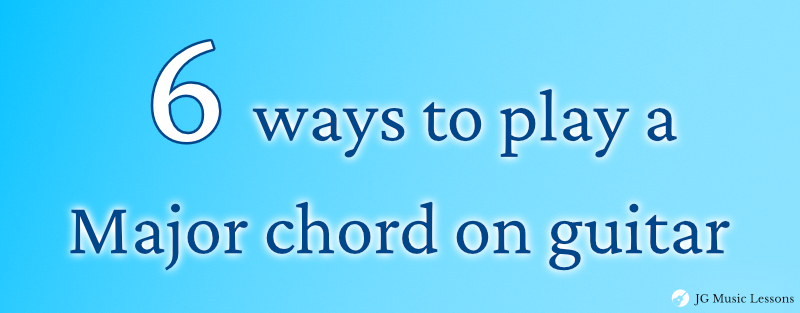When first learning to play guitar, you typically start with basic chords (aka open chords). As you progress, you’ll want to expand and learn other ways of playing the same chord throughout the fretboard to give you more flexibility.
If you become reliant on one area of the fretboard, it can hold you back from progressing to the next level on your instrument. It’s easy to get stuck or revert back to what you are familiar with when the music might call for playing your chords a different way.
In this lesson, we’ll explore 6 ways to play a Major chord on the guitar. The goal is to be able to apply these chord shapes in any given key signature.
We’ll first learn the chord shapes for C Major and then show you how to apply the shapes to other chords as well. We will cover two different chord variations starting on the 5th, 6th, and 4th strings.
Let’s get started!
How to read the chord charts
For the charts below:
- The top horizontal line of the chord chart represents the high E string and the bottom horizontal line represents the low E string.
- The vertical lines separate each fret.
- The numbers in the blue dots tell you which fingers to use on the fretting hand.
- The letters on the right of the charts tell you what notes you are playing on each string.
- Circles on the left represent open strings.
- Red X means to avoid that string.
You can check this link for more on how to read guitar notation symbols.
1. 5th string variation 1 (C shape)
This is one of the first chords you should learn when starting to play guitar.

Although this is a relatively easy chord to learn, it gets tricker when you need to shift this shape to another root not along the 5th string. You will see later in this lesson how you rearrange your fingers when starting on a different root note.
2. 5th string variation 2 (A shape)
For the second chord variation on the 5th string, you have a classic barre chord shape that you can easily shift on that string. The root note is in the same position as the previous chord but you are using a different finger on the bass note.

This chord comes from the original open A chord but when shifting the shape, we have to add the first finger to barre and then rearrange your other fingers to match the shape.
Quick tip* If playing a barre chord is too difficult for you, at least try playing from the 5th string until the 2nd. Add the 1st string (thinnest) as you learn to develop more strength and better placement in your fingers.
You can also check out this lesson on how to get better at playing barre chords.
3. 6th string variation 1 (G shape)
Although this may be one of the least common shapes that you will use, you might see this chord once you get into more intermediate material.

This come from the original open G chord although we omit the fingers on the first two strings when shifting the shape to all fretted notes.
You can also play this chord without the 3rd finger and play strings 6th, 4th, 3rd and 2nd if you prefer a finger picking style.
4. 6th string variation 2 (E shape)
This second chord variation on the 6th string is another classic barre chord shape. This shape comes from the original open E chord but again your fingers get rearranged once you use your first finger to barre a chord.

If you have a hard time playing this barre chord, try to start by playing strings 6 through 3 and then add your first two strings as your barring technique improves.
5. 4th string variation 1 (F shape)
This shape is a simplification of the previous barre chord which comes from the F chord shape that can be played in the 1st position of the guitar. This barre is much easier to do since you only need to cover 2 strings with your first finger.

6. 4th string variation 2 (D shape)
The second chord variation starting on the 4th string comes from the original open D chord, another essential chord you first learn when starting out. Again, your fingers get rearranged once you add the 1st finger.

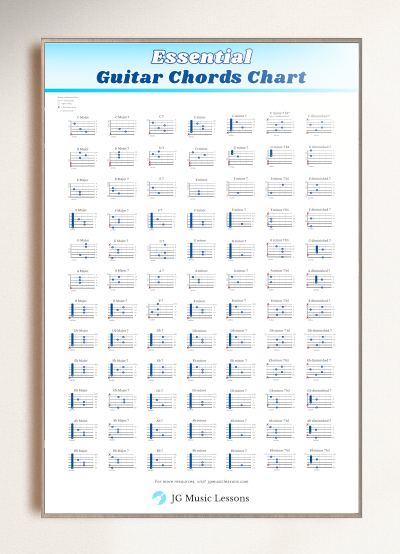
Examples of applying shapes to Major chords
Now that we covered the chord shapes you can play for a C Major chord, we’ll apply these shapes to other chords. Remember that although the shapes are the same, some fingerings may change because we have to take into account the open strings as well.
Now, we’ll apply the 6 Major chord shapes in E Major.
Major chord shapes in E
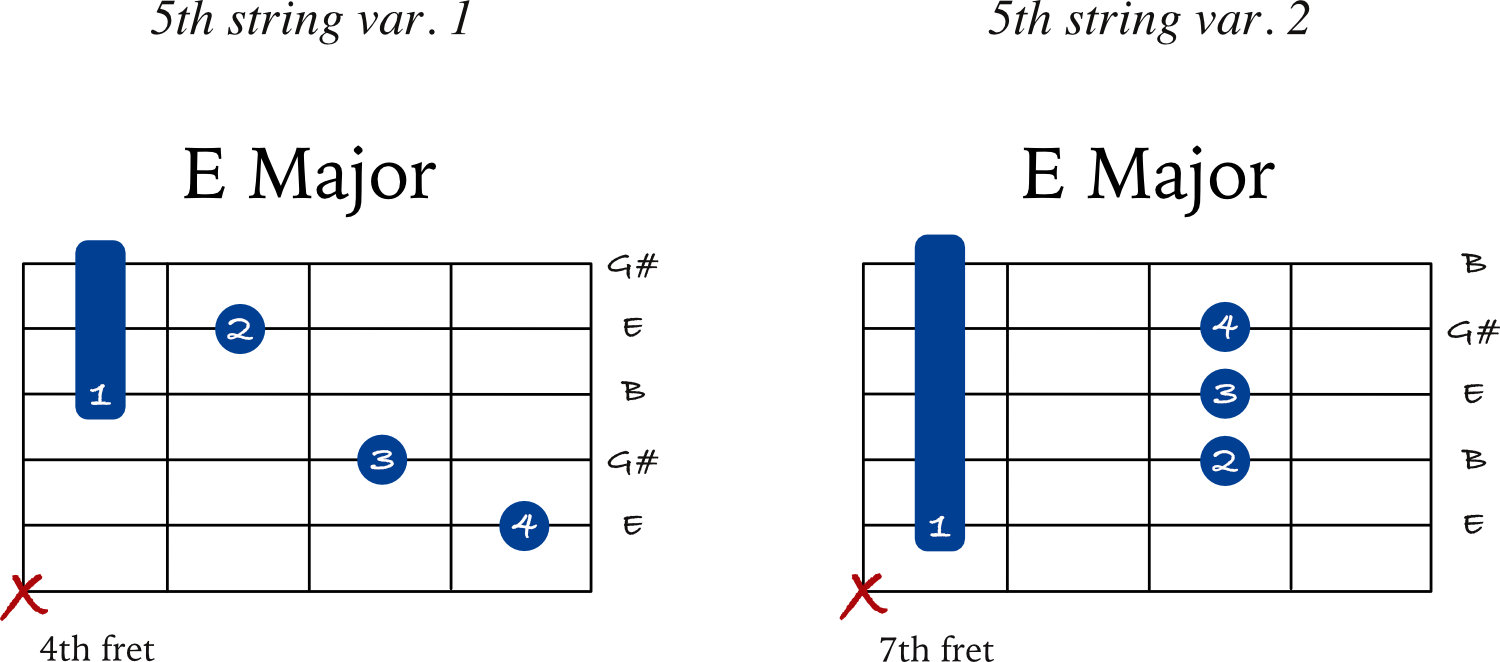
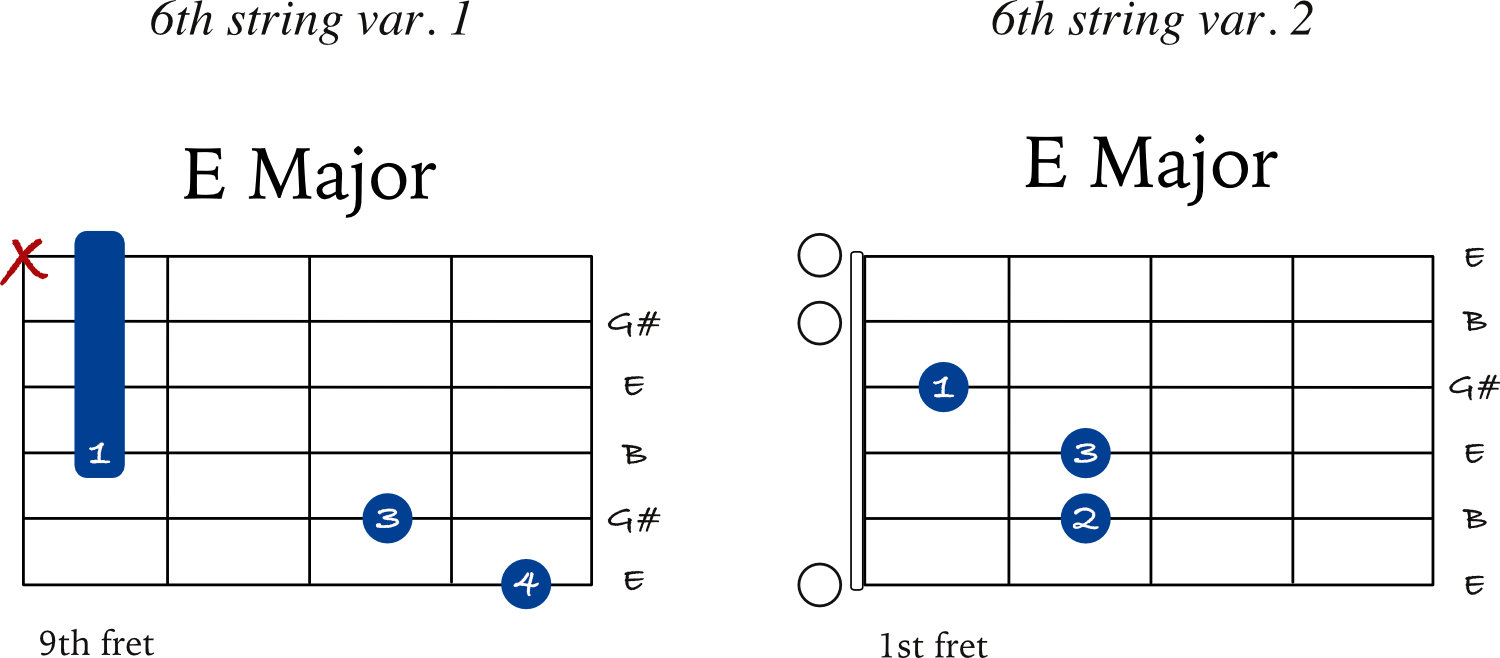
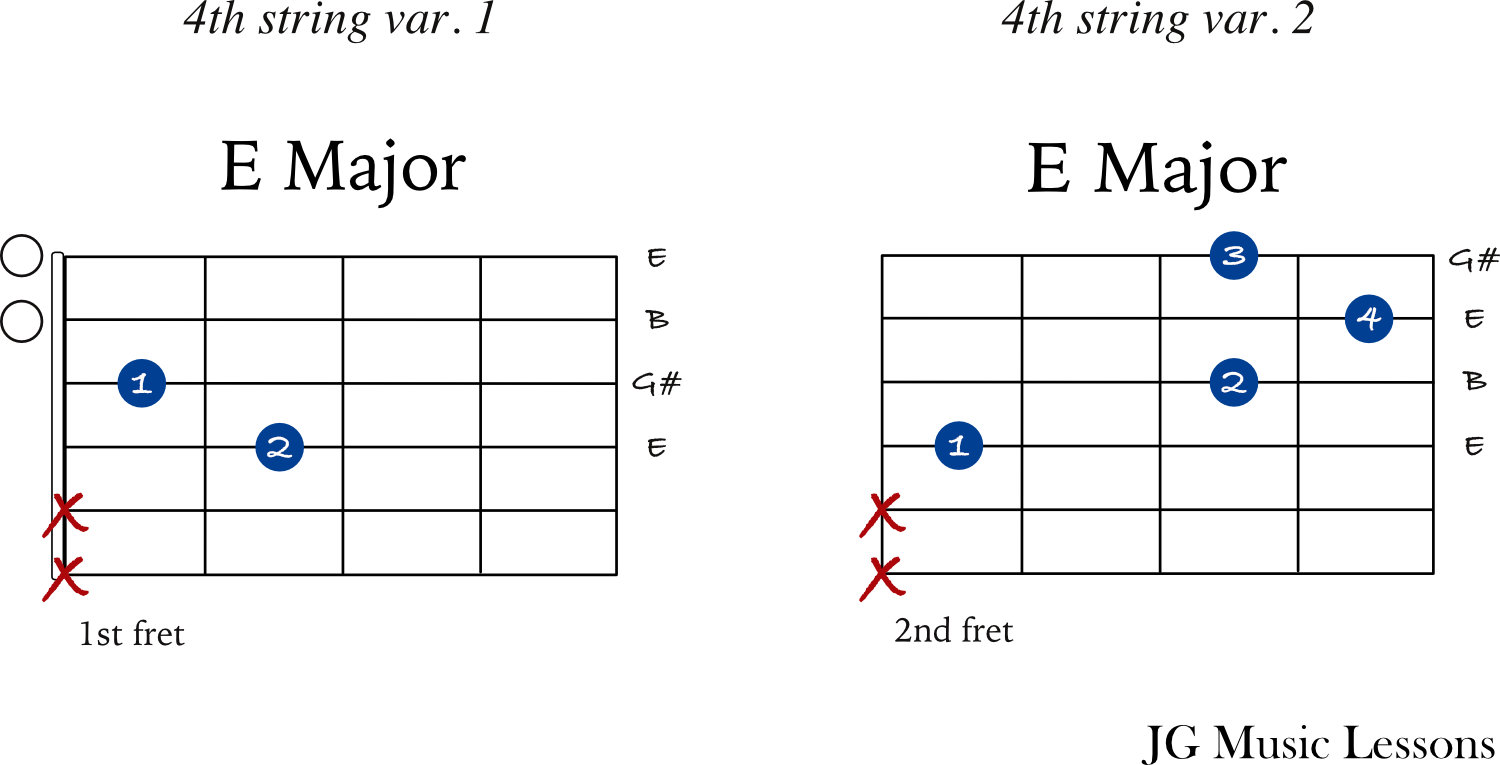
Major chord shapes in A
Here are the same shapes now adjusted for an A Major chord.


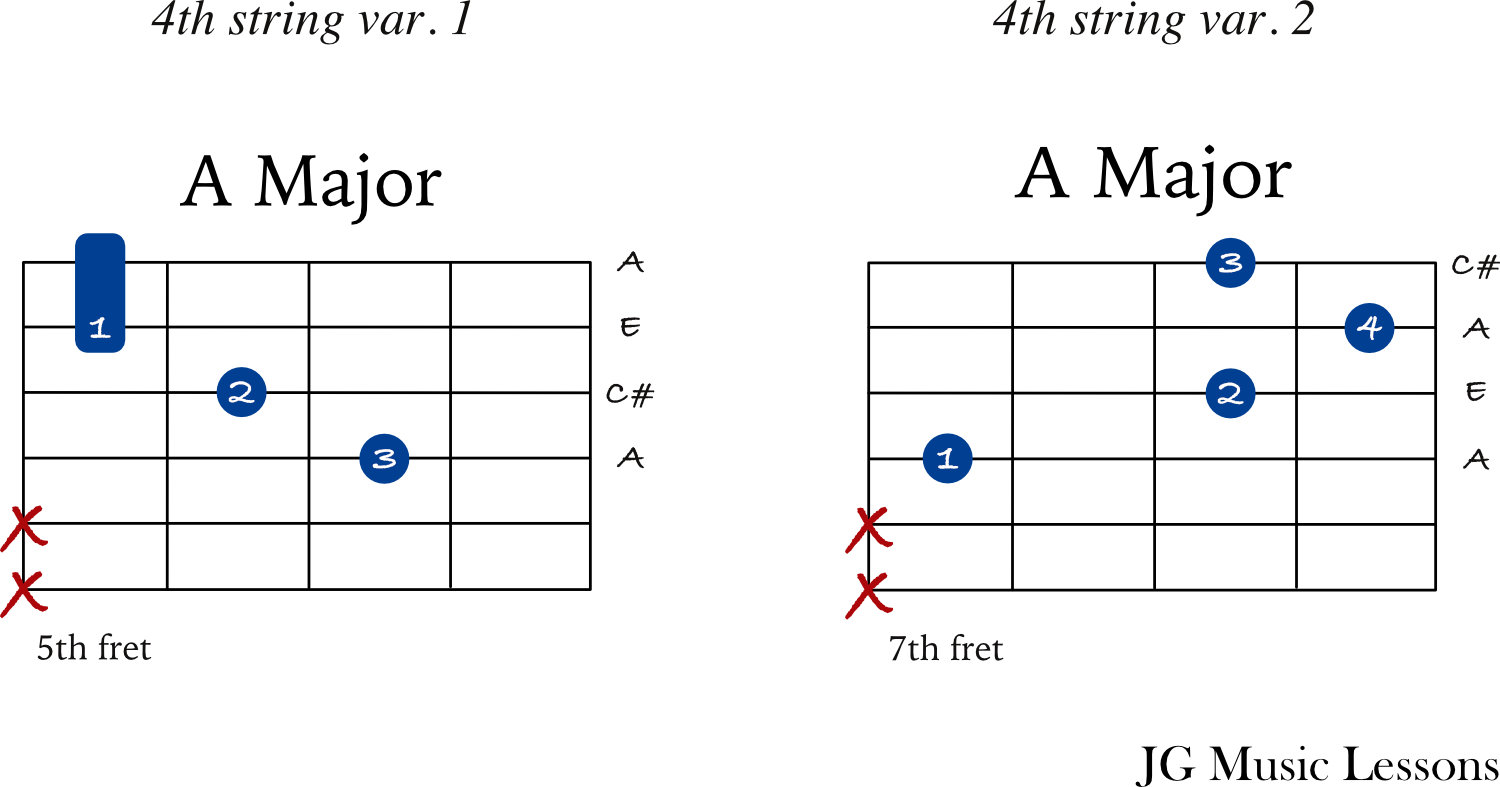
Wrapping up
Learning these 6 variations of the same chord will be a great way to make smoother transitions when changing between chords on your guitar.
It can also help you to connect a melody with chords as you improve your ability to play the same chord in different ways. This is because each chord variation gives you a different note on top which you can use to highlight melody notes.
It takes time and effort to break out of what you are comfortable playing but the goal is to expand on what you already know. It will be worth the effort to learn a new way of playing chords in the long run because you can use it for new material moving forward and it will only get easier as you review these chords shapes.
After learning the shapes we covered here for C, E, and A Major, I recommend you try this for different chords to really master the shapes.
I hope this material was helpful so you can start to incorporate it to your playing. Have fun exploring these chord variations and see what sounds good to you!
📘 Get the free guitar practice guide here!
All the best,
JG Music Lessons
📙 Kickstart your guitar playing with our step by step guide: Guitar Essentials.
🎸 Looking for a travel or half-sized guitar? See this one.
🛠 See our other music recommendations.
🤝 Support the site to help us to create better content for you!
Level up with the FREE guitar practice guide and effectively improve your playing! 🎸
Get it sent to your email!

